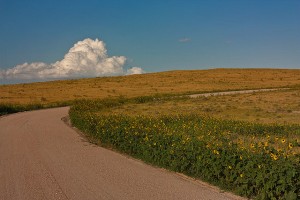Across San Pablo Bay, Contra Costa County is also trying to manage growth wisely. The population here is expected to increase by 127,000 within 20 years, and housing for those newcomers will be built somewhere. The trouble is, developers are eyeing open space that’s already home to about 150 rare species, including California red-legged frogs, western burrowing owls, San Joaquin kit foxes, and vernal pool fairy shrimp.
In 1998, the U.S. Fish & Wildlife Service and the California Department of Fish & Game encouraged Contra Costa County to develop a habitat conservation plan (HCP). According to the county’s principal planner, John Kopchik, wildlife agencies worried that a project-by-project approach to development could harm those rare species. After years of work by government agencies, private developers, environmentalists, and ranchers, the East Contra Costa County Habitat Conservation Plan/Natural Community Conservation Plan has been approved by all participating local agencies. Pending final state and federal approval and permits, the plan will be the first large-scale HCP in the Bay Area.
“The idea is to sacrifice low-priority habitats for higher-priority habitats,” says Kopchik. “It’s a compromise between meeting the needs of development while protecting our resources.”
Under the plan, areas declared critical for conservation—such as those with vernal pools, native grasslands, oak woodland, or streams—will be purchased from willing sellers. The plan emphasizes the expansion of existing protected areas such as Mount Diablo State Park and Black Diamond Mines and Morgan Territory regional preserves. Wildlife corridors will be protected, as will the habitat of species such as the threatened Alameda whipsnake.
“An HCP allows us to look beyond protecting postage-stamp parcels to preserving landscapes,” says Lech Naumovich, conservation analyst for the California Native Plant Society‘s East Bay chapter. The county planning department has already raised $8 million for land purchases under the HCP.
And why are developers on board? They’ll be given fast-track permits for up to 11,853 acres of urban development. In exchange, they will have to purchase land for, or contribute cash to, the HCP agency. These mitigation funds will be used for the acquisition of between 23,800 to 30,300 acres of protected lands. Land acquisition will account for two-thirds of the $350 million estimated cost of the program over its 30-year term.
“Local development has regional impacts, so it makes sense to have an overarching plan,” says Elizabeth Stampe of Greenbelt Alliance, a group that supported the HCP. “Now we’ll see how the implementation goes.” To learn more go to the East Contra Costa County Habitat Conservation Plan Association (HCPA).

.jpg)

-300x275.jpg)
-300x199.jpg)
-300x195.jpg)